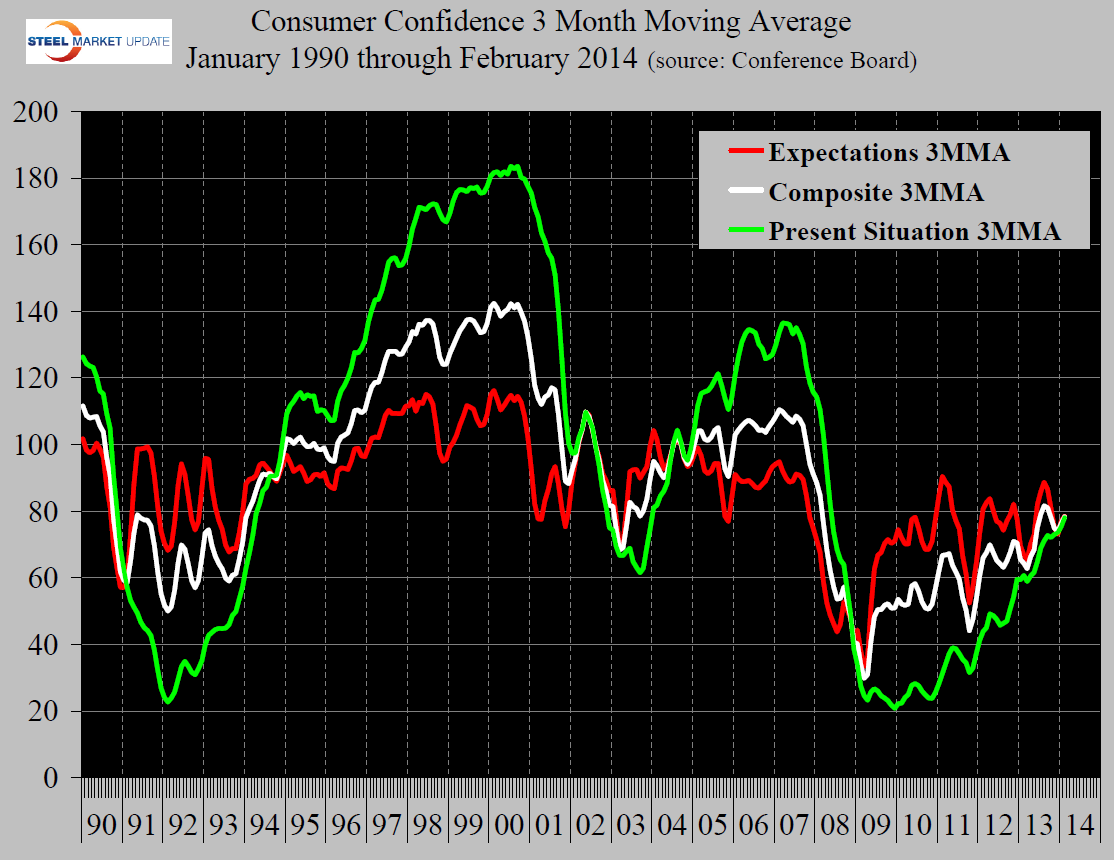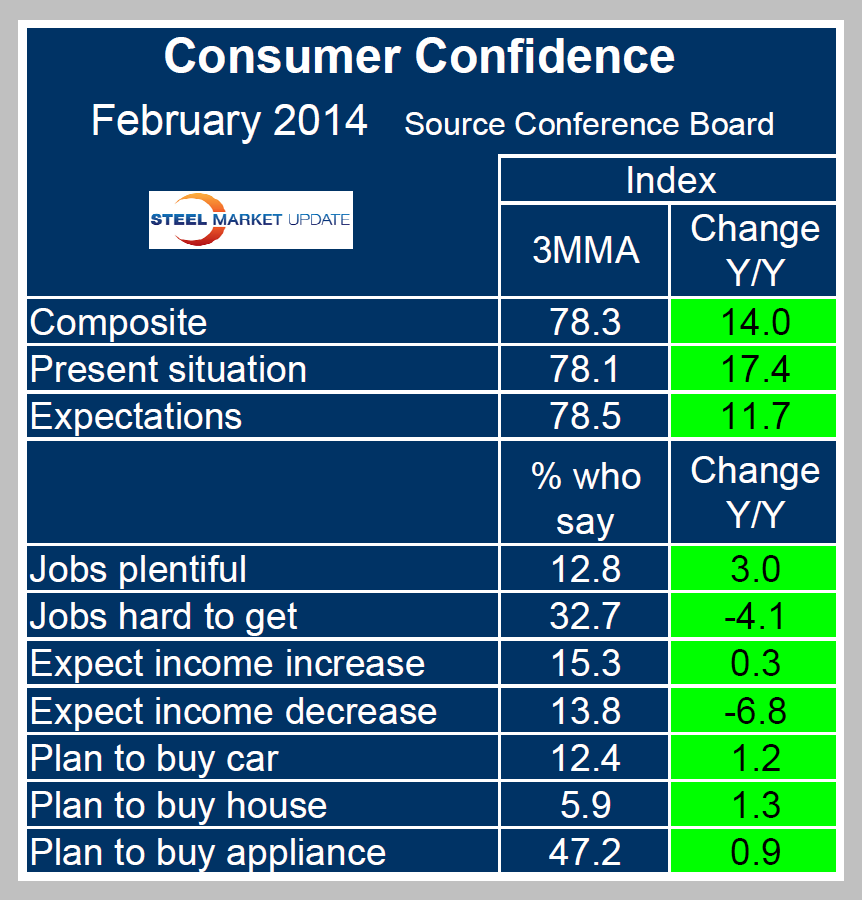Market Data

February 27, 2014
Consumer Confidence in February
Written by Peter Wright
The consumer confidence index declined by 1.3 in February driven by an increase of 4.4 in the present situation component and a decline of 5.4 in consumer expectations. The three month moving average (3MMA) of both the present view and expectations increased which caused the composite to rise from 76.3 to 78.3 (Figure 1).
 The average value of the composite index since 1980 has been 93.8, a level which at the present rate of growth won’t be realized until late 2016. On a year over year basis using a 3MMA the composite is up by 14.0 lead by consumers view of the present situation which is up by 17.4 (Table 1). All the sub-components in Table 1 are green. The consumers view of job opportunities is improving as are income expectations. Intentions for home and auto purchase are up year over year and the recent reported weakness in the housing market is not reflected in the consumer confidence index for which the housing component has been more or less flat since July. As the year progresses, other factors will support consumer sentiment.
The average value of the composite index since 1980 has been 93.8, a level which at the present rate of growth won’t be realized until late 2016. On a year over year basis using a 3MMA the composite is up by 14.0 lead by consumers view of the present situation which is up by 17.4 (Table 1). All the sub-components in Table 1 are green. The consumers view of job opportunities is improving as are income expectations. Intentions for home and auto purchase are up year over year and the recent reported weakness in the housing market is not reflected in the consumer confidence index for which the housing component has been more or less flat since July. As the year progresses, other factors will support consumer sentiment.
The S&P/Case-Shiller home price had its largest y/y increase in eight years in December and gains have become more widespread regionally. Fewer homeowners are under water on their mortgages and positive equity should support consumer spending as should the recent performance of the stock market.
The official statement from the Conference Board read as follows:
The Conference Board Consumer Confidence Index Declines Moderately
The Conference Board Consumer Confidence Index, which had increased in January, fell moderately in February. The Index now stands at 78.1 (1985=100), down from 79.4 in January. The decline was driven by the Expectations Index, which dropped to 75.7 from 80.8. The Present Situation Index, by contrast, climbed from 77.3 to 81.7.
The monthly Consumer Confidence Survey, based on a probability-design random sample, is conducted for The Conference Board by Nielsen, a leading global provider of information and analytics around what consumers buy and watch. The cutoff date for the preliminary results was February 13.
“Consumer confidence declined moderately in February, on concern over the short-term outlook for business conditions, jobs, and earnings,” said Lynn Franco, Director of Economic Indicators at The Conference Board. “While expectations have fluctuated over recent months, current conditions have continued to trend upward and the Present Situation Index is now at its highest level in almost six years (April 2008, 81.9). This suggests that consumers believe the economy has improved, but they do not foresee it gaining considerable momentum in the months ahead.”
Consumers’ appraisal of current conditions improved for the fourth consecutive month. Those claiming business conditions are “good” increased to 21.5 percent from 20.8 percent, while those claiming business conditions are “bad” declined to 22.6 percent from 23.4 percent. Consumers’ assessment of the labor market also improved. Those claiming jobs are “plentiful” increased to 13.9 percent from 12.5 percent, while those saying jobs are “hard to get” decreased slightly to 32.5 percent from 32.7 percent.
Consumers’ expectations, which had been improving over the past two months, retreated in February. The percentage of consumers expecting business conditions to improve over the next six months decreased to 16.3 percent from 17.0 percent, while those anticipating business conditions to worsen increased to 13.3 percent from 12.2 percent. Consumers’ outlook for the labor market was also more pessimistic. Those expecting more jobs in the months ahead declined to 13.3 percent from 15.1 percent, while those anticipating fewer jobs increased to 20.6 percent from 19.0 percent. The proportion of consumers expecting their incomes to increase declined from 16.6 percent to 15.4 percent, but those anticipating a decrease in their incomes also declined, from 13.9 percent to 13.1 percent. (Source: The Conference Board)








